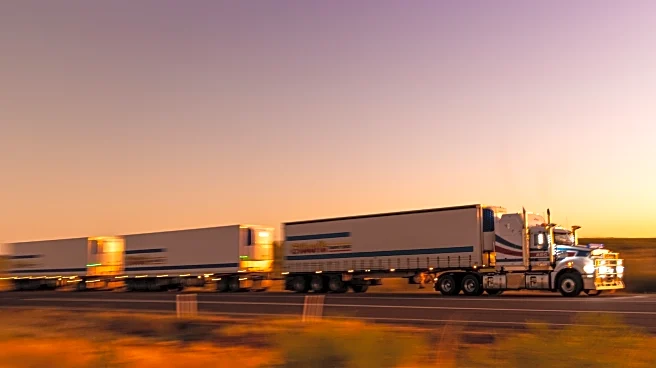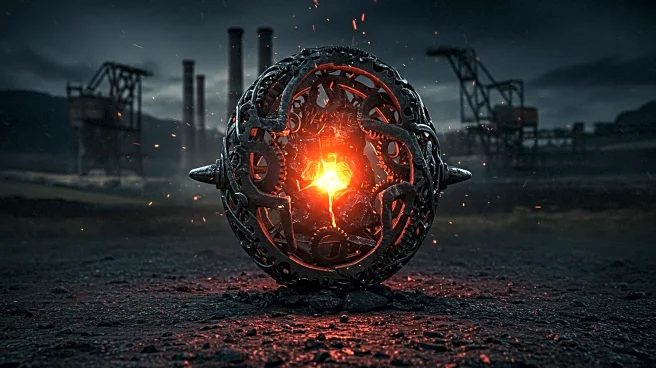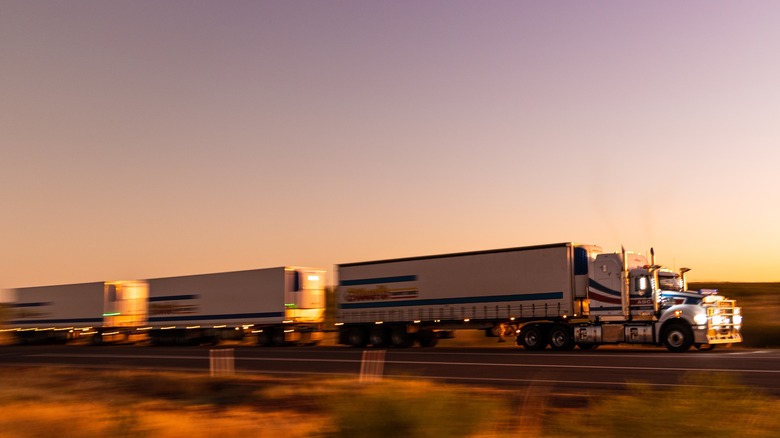
Australian road trains are gigantic trucking rigs consisting of a tractor, often referred to as a prime mover, and up to four standard trailers. These behemoths can measure up to 176 feet long (53.5 meters) and mostly ply their trade in Australia's vast and forbidding Outback. But what is so unique about Australia that makes the road train so essential for the country? Of course, the primary function of any truck -- including road trains -- is to take cargo from one place to another. However, most countries
don't rely solely on trucks for transportation. Air, rail, and sea are all commonly used alongside trucks to keep the wheels of commerce greased and our Amazon parcels delivered.
The story is different in Australia's Outback. The Outback is simply enormous, covering over 2 million square miles. It's a vast and sparsely populated hinterland of mostly desert that accounts for over 80% of Australia's land mass. For comparison, this is nearly four times the size of Alaska, America's largest state. Yet, despite this huge size, the Outback is only home to about 5% of Australia's total population. That's where road trains come in, serving this sparse population and supporting key Outback industries, like mining and sheep farming, in an area that often has poor infrastructure.
Read more: The Most Reliable Duramax Diesel Engines (And Which To Avoid) According To Owners
Road Train Weight And Classifications
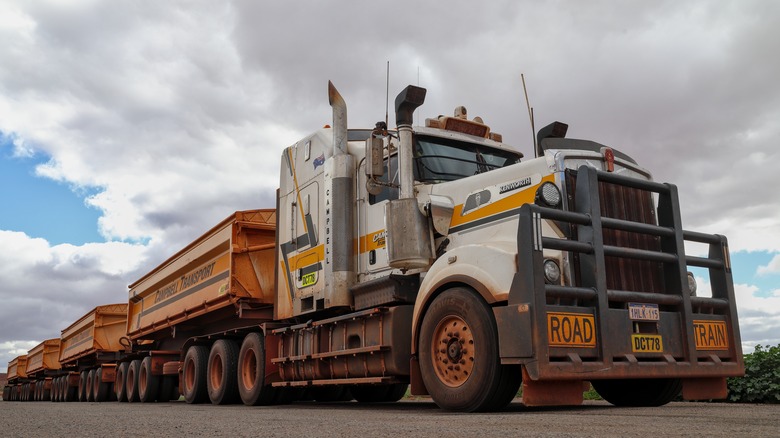
In the U.S., a semi-truck travelling on the interstate can weigh no more than 80,000 pounds. This includes the truck, trailer, and its cargo. An Australian road train can weigh as much as 200 tonnes (440,924 pounds) when fully loaded. That far exceeds the admittedly impressive 100-ton train that a Land Rover pulled recently. As noted, road trains can only have a maximum of four trailers. However, this only applies to public roads; mining companies often run far longer rigs on private roads. According to Guinness World Records, the longest ever road train consisted of 113 trailers and was an astonishing 4,836 feet and 11 inches long. Okay, it only travelled less than 500 feet, but that's still impressive.
More realistically, current road trains are classified by their configuration and length. For example, a B-double is a prime mover towing two semi-trailers, and a B-triple is unsurprisingly a prime mover and three trailers. Then there are the "A" trains; these use full-size trailers, and a prime mover pulling three of these will be an A-triple. Companies can also mix and match, with a rig consisting of two full-sized trailers and a semi-trailer classified as an AB-triple. Of course, pulling all this weight needs something with substantial grunt. Let's take a look at the Mack Titan, a road train hero with distinctly American roots.
All About The Mack Titan, Australia's Road Train Hero
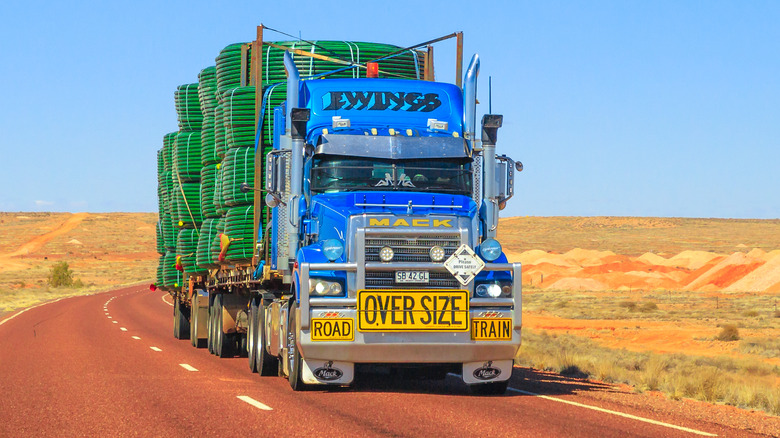
Despite being currently owned by Volvo, Mack Trucks has been an American institution for over a century. However, Mack's Australian operation ensures that the company also has a presence in the Southern Hemisphere... and how. The Mack Titan is designed and built in Australia specifically to cope with hauling massive loads across the Australian Outback. Powered by a 17-liter Mack MP11 engine, the Mack Titan has up to 780 hp and can manage an impressive 2,800 lb-ft of torque. Both of which are essential for a truck that can be up to four full trailers long and weighing as much as 440,000 pounds.
Driver comforts are also important, especially when you consider that truckers often work for shifts that can be as long as 17 hours. To this end, modern semi-trucks like the Mack Titan feature driver aids like automatic transmission, braking assistance, and hill start assist. The road train driver is well catered for in the cabin, too. Amenities include an air suspension driver's seat, an infotainment system, and a full-color co-pilot display. Finally, the comforts also extend to the driver's downtime. The Mack Titan has a walk-through sleeper cabin that's both comfortable and functional, serving as a mobile home for the men and women who drive these behemoths across the harsh Australian Outback.
Want the latest in tech and auto trends? Subscribe to our free newsletter for the latest headlines, expert guides, and how-to tips, one email at a time.
Read the original article on SlashGear.
